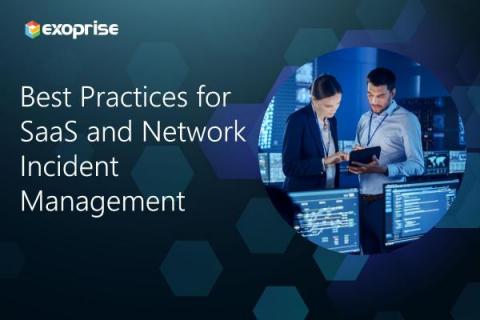Operations | Monitoring | ITSM | DevOps | Cloud
Latest News
Best Practices for SaaS and Network Incident Management
Computer and network systems have (obviously) become vital to business operations. Occasionally, there are SaaS or network incidents and these systems do not operate as needed. Enterprises want to minimize the potential damage and get their systems back online ASAP. Integrated incident management and a strong End User Experience Management (EUEM) platform that provides synthetic and real-user monitoring is a foundation for meeting that objective.
Why you need an internal status page
When we launched incident.io Status Pages a few months ago, we stressed the importance of communicating clearly with your customers about ongoing issues. To help with this, we spent a lot of time carefully designing a status page that’s easy to understand for everyone - whether they come from a technical background, work in a different area, or just want to get on with their day.
Trending: Automation in I&O Optimization according to the Gartner 2023 Hype Cycle
In this blog, we take you through the latest trends in I&O optimization as Gartner’s report Hype Cycle for I&O Automation, 2023 predicts the widespread adoption of automated tools supporting IT infrastructure. This blog focuses on tools—like OnPage’s incident alert management solution—likely to be widely adopted as a standard for I&O optimization in the near future.
How to Maximize Time Savings and Reduce Toil During Incident Response
Incidents are a costly burden on businesses. Despite assembling the right people and teams, the manual work, tool setup and prolonged tasks can negatively impact customer experience. The need for adaptable processes to address diverse incident types further complicates the situation. This is where the PagerDuty Operations Cloud steps in. It streamlines and automates all the various manual steps in the incident response process.
Kubernetes Monitoring Best Practices
Kubernetes can be installed using different tools, whether open-source, third-party vendor, or in a public cloud. In most cases, default installations have limited monitoring capabilities. Therefore, once a Kubernetes cluster is running, administrators must implement monitoring solutions to meet their requirements. Typical use cases for Kubernetes monitoring include: Effective Kubernetes monitoring requires a mix of tools, strategy, and technical expertise. To help you get it right, this article will explore seven essential Kubernetes monitoring best practices in detail.
The DevSecOps Toolchain: Vulnerability Scanning, Security as Code, DAST & More
DevSecOps is a philosophy that integrates security practices within the DevOps process. DevSecOps involves creating a ‘security as code’ culture with ongoing, flexible collaboration between release engineers and security teams. The main aim of DevSecOps is to make everyone accountable for security in the process of delivering high-quality, secure applications. This culture promotes shorter, more controlled iterations, making it easier to spot code defects and tackle security issues.
The Medium is the Message: How to Master the Most Essential Incident Communication Channels
We’ve all seen it: a company experiencing a major incident and going radio silent, leaving their customers to wonder “Are they doing something about this?!”. If you’ve ever been on the inside of something like this, you know the answer is most likely yes, there are people working hard to put out the fire as quickly as possible. But when it comes to incidents, perception is reality for customers.
Looking Beyond Atlassian StatusPage: The 5 Best Alternatives
Custom fields: make FireHydrant your personalized incident management platform
Today we're releasing custom fields, a powerful new feature that empowers you to tailor FireHydrant to your organization's specific needs and capture essential incident details. Custom fields help you track critical states, involved parties, resolution specifics, affected services, messages, and more — almost anything you want! — all aligned with your unique workflows. Regardless of the size of your team or the maturity of your processes, custom fields adapt to your workflow.










